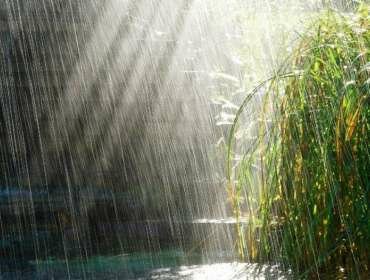We breathe 24 hours a day, 7 days a week, consuming about 25 kg of air every day. It turns out that we practically predetermine our health by the air we breathe.
Everyone knows that the air in the premises (and we are in them on average 60-90% of the time) are several times more polluted and toxic than the atmospheric.
So our body spends more energy on neutralizing dangerous compounds and maintaining the body in a tone. And of course it leads to our rapid fatigue, lethargy, apathy and irritability.
Ozone - what is it?
In 1785, a physicist Martin Van-Marum discovered that oxygen under the action of electric sparks acquired a special smell of "thunderstorms" and new chemical properties. Ozone is a special form of oxygen existence, its modification. In Greek, ozone means "smelling".
Ozone is a gas of blue color with a characteristic odor, a very strong oxidant. Molecular formula of ozone is O3. It is heavier than oxygen and our usual air.
The scheme for the formation of ozone is as follows: under the action of an electric discharge, some oxygen molecules of O2 break up into atoms, then atomic oxygen combines with a molecular oxygen and O3 ozone forms. In nature, ozone is formed in the stratosphere under the action of ultraviolet radiation from the sun, and also in electric discharges in the atmosphere.
During a thunderstorm, when the electric discharges of lightning "pierce" the atmosphere, the ozone formed we feel as the freshness of the air. This is especially noticeable in places rich in oxygen: in the forest, in the seaside zone or near the waterfall. Ozone really cleans our air! Being a strong oxidizer, it decomposes many toxic impurities in the atmosphere to simple, safe compounds, thus disinfecting the air. That's why, after a thunderstorm, we feel pleasant freshness, it's easy to breathe, and we see everything more clearly.
The bulk of ozone in the atmosphere is located at an altitude of 10 to 50 km with a maximum concentration at an altitude of 20-25 km, forming a layer called the ozonosphere.
The ozonosphere reflects severe ultraviolet radiation, protects living organisms from the harmful effects of radiation. It is because of the formation of ozone life on the Earth had become possible.
However, we know that ozone is an oxidizing agent. Is it harmful to man and all life? Any substance can be both a poison, and a medicine - all depends on a dose. Small concentrations of ozone create a feeling of freshness, disinfect the environment around us, "clean" our airways. But high concentrations of ozone can cause respiratory tract irritation, coughing, dizziness.
Therefore, relatively high concentrations of ozone are used to disinfect water and air, and lower ones contribute to wound healing and are widely used in cosmetology.


